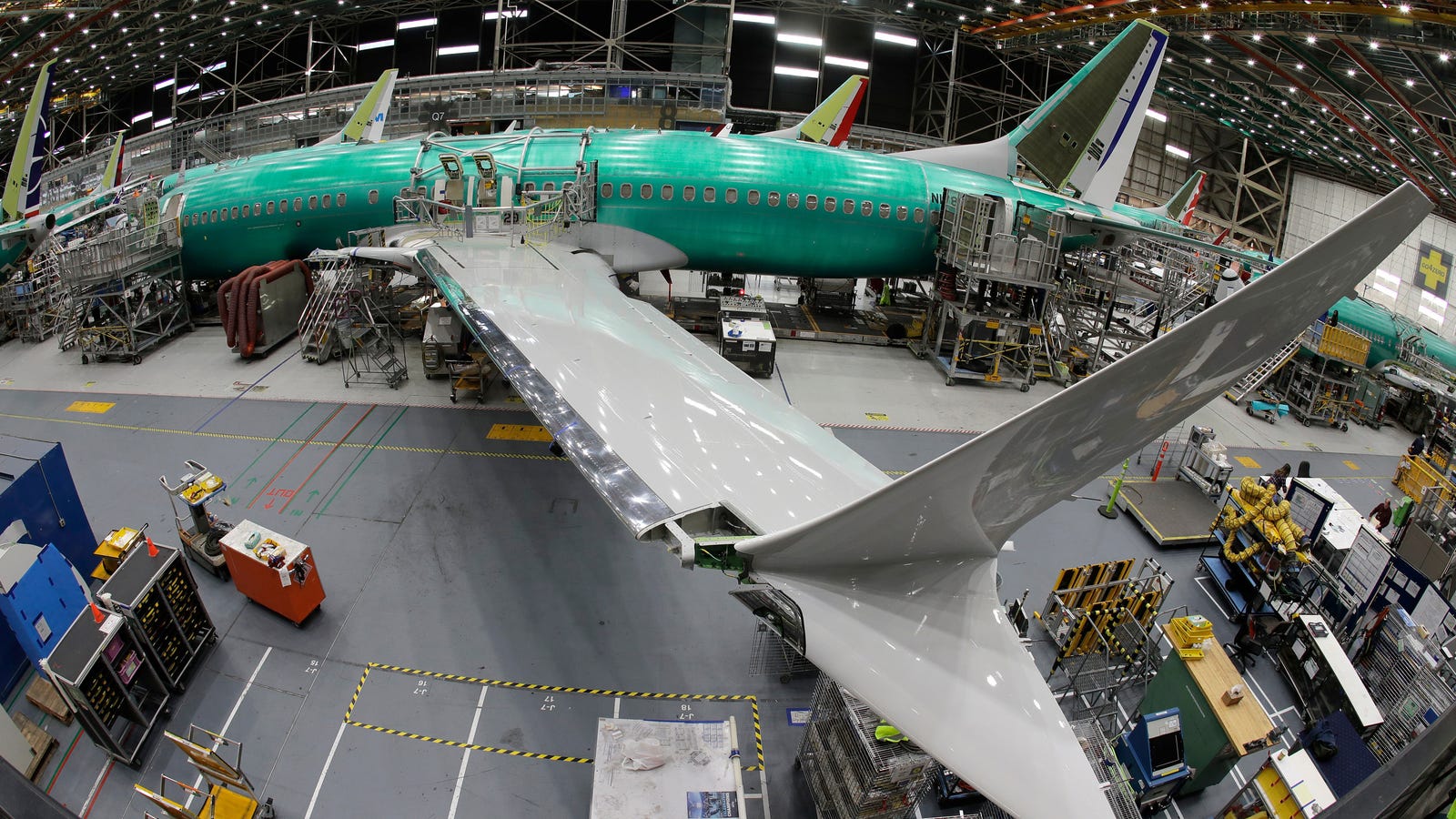https://gizmodo.com/faa-reportedly-delegated-oversight-of-critical-737-max-1836761865

A New York Times investigation into the Boeing 737 Max crisis—involving two crashes that killed a cumulative 346 people and the continued grounding of the entire line from global service—has found troubling signs that the Federal Aviation Administration process to guarantee the planes’ safety was fatally flawed and bent to Boeing pressure when it came to potential hazards.
The Times wrote that after “intense lobbying to Congress by industry” resulted in the FAA delegating more authority to manufacturers in 2005, an approach that FAA officials believed would streamline approvals, some staff became concerned that they were no longer able to track what was happening inside Boeing. According to the Times, interviews with over a dozen current and former FAA and Boeing employees have shown that regulators “never independently assessed the risks of the dangerous software known as MCAS [Maneuvering Characteristics Augmentation System] when they approved the plane in 2017.”
During the 737 Max’s development, the Times wrote, the FAA assigned two engineers to oversee flight control systems at its Boeing Aviation Safety Oversight Office that other staff say were poorly qualified for the roles. An early version of MCAS cleared a Boeing safety review and the system “didn’t prompt additional scrutiny from the F.A.A. engineers,” two FAA officials told the paper. But the FAA delegated further review of the system to Boeing in 2016 even as it made significant alterations to MCAS—which was designed to prevent in-flight stalling but has been implicated as the likely cause of the nose dives detected in the Lion Air and Ethiopian Airlines crashes. (A report in Bloomberg on Saturday indicated it is possible the problem is not with MCAS per se, but with other software that activated the system in a scenario where “multiple erroneous data streams in a flight computer… occurred simultaneously.”)
The early version could move the 737 Max’s stabilizer by 0.6 degrees, while the new version could move it up to 2.5 degrees. FAA engineers were left almost totally unaware of this, the Times wrote, and Boeing “assumed” that pilots could correct any malfunction:
When company engineers analyzed the change, they figured that the system had not become any riskier, according to two people familiar with Boeing’s discussions on the matter. They assumed that pilots would respond to a malfunction in three seconds, quickly bringing the nose of the plane back up. In their view, any problems would be less dangerous at low speeds.
So the company never submitted an updated safety assessment of those changes to the agency. In several briefings in 2016, an F.A.A. test pilot learned the details of the system from Boeing. But the two F.A.A. engineers didn’t understand that MCAS could move the tail as much as 2.5 degrees, according to two people familiar with their thinking.
According to the Times, the FAA assumed the “system was insignificant” and further allowed Boeing to remove mentions of it from pilots’ manuals; the FAA “did not mention the software in 30 pages of detailed descriptions noting differences between the Max and the previous iteration of the 737.”
In another example provided by the paper, FAA engineers concluded that the plane’s upgraded engines could pose a risk to cables controlling the rudder if they disintegrated in midair. The FAA acknowledged in a subsequent investigation that the Max “does not meet” its standards “for protecting flight controls,” the Times wrote, but sided with Boeing in 2015 that it would be “impractical at this late point in the program” to compel a change.
In a 2017 report, the paper added, an FAA panel investigating complaints about the issue concluded that Boeing had created “an environment of mistrust that hampers the ability of the agency to work effectively” and that the company had a “vested interest in minimizing costs and schedule impact.”
Additionally, a two-decade veteran of the FAA who was a leading advocate of delegating authority to manufacturers, Ali Bahrami, left the agency in 2013 to take a lobbying role at the Aerospace Industries Association trade group where he urged “maximum use of delegation” to Congress. He returned to the FAA in 2017 as the head of safety, the Times noted.
Boeing denied that the FAA was left in the dark about MCAS in a statement to Business Insider, with spokesman Peter Pedraza saying that “The 737 MAX met the FAA’s stringent standards and requirements as it was certified through the FAA’s processes… The FAA considered the final configuration and operating parameters for MCAS and concluded it met all certification and regulatory requirements.”
According to the Times, an FAA official said that by 2018, the agency was letting Boeing self-certify 96 percent of its own work. After the Lion Air crash, the paper wrote, FAA officials were stunned to learn details of MCAS from Boeing.
The 737 Max line of jets remains on the ground until Boeing is able to have a fix certified by the FAA; it says a software update will be capable of resolving the issue but it is unclear whether hardware solutions will ultimately be required. Southwest has pulled the plane from its roster until next year, while American and United are not anticipating a solution until at least November, according to CNBC.
via Gizmodo https://gizmodo.com
July 27, 2019 at 07:30PM
